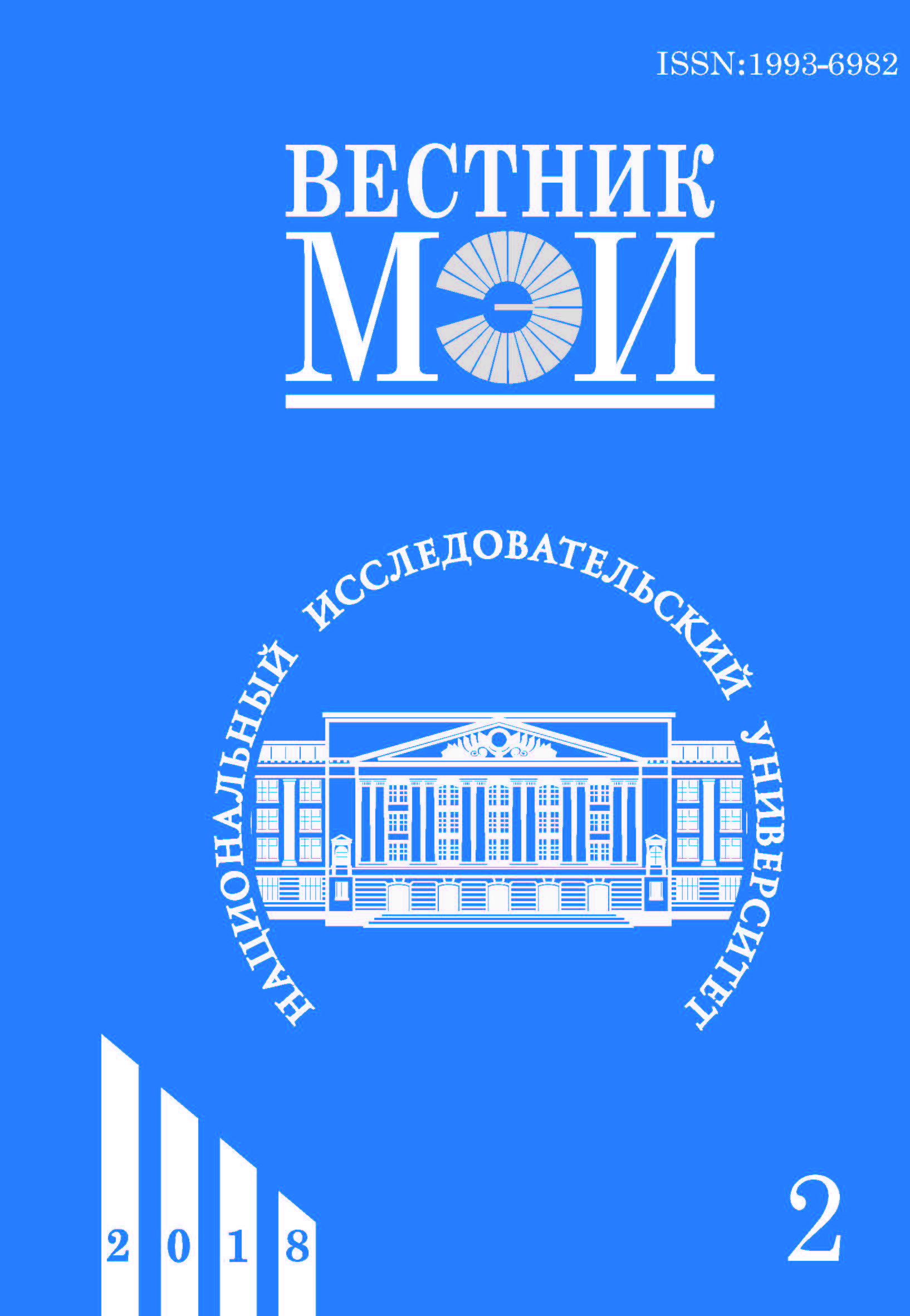Specific Features Pertinent to the Use of Planar Antenna Arrays with Central Symmetry in Interference Cancellers
Abstract
Matters concerned with analyzing the performance of an interference canceler equipped with a specially configured antenna array (AA) are discussed. As is known, the performance of an adaptive system depends directly on the characteristics and arrangement of antenna array elements. It is shown that the use of planar centrally symmetric AAs in the interference canceler scheme entails an essential drawback pertinent to operation of the adaptive system as a whole. Namely, there are some cases of interference arrival directions (jamming environment) in which the canceler fails to suppress the active interference. With such environment, the jams are statistically independent, act from different directions, and their number is by one fewer than the number of AA elements. This is due to the fact that for the considered jamming environment cases the rank of the jammer subspace is less than the number of acting jammers. As a result, an attempt to set up the array pattern zeroes in the directions of all jams is not met with success. The problem of searching jamming environments for which the above-mentioned drawback takes place is analyzed. The special jam action directions for which the interference canceler shows poor performance are calculated taking a four-element planar AA as an example. The obtained theoretical results are confirmed by simulating the interference canceler operation. The constructed interference canceler model does not contain the destabilizing factors available in real hardware, a circumstance that opens the possibility to estimate the effect of jamming environment as the only influencing factor. The simulation results make it possible to estimate the canceler performance in unfavorable jamming environment. For the considered case, the suppression ratio has been reduced up to 2.7 dB with the interference-to-noise ratio equal to 60 dB at the canceler input, as a result of which the acting jams pass to the canceler output almost without having been suppressed at all. The interference canceler performance both in favorable and unfavorable environments is clearly shown by an antenna pattern. To overcome the considered drawback, it is recommended to alter the AA geometry and use a redundant number of antenna elements and other receiving system anti-jam algorithms.
References
2. Dabak Ö.C. е. а. Interference suppression in a GPS receiver with 4 element array design and implementation of beamforming algorithms // Proc. Position, Location and Navigation Symp. (PLANS). Savannah (GA), 2016. Pp. 645—652.
3. Ширман Я.Д., Манжос В.Н. Теория и техника обработки радиолокационной информации на фоне помех. М.: Радио и связь, 1981.
4. Монзинго Р.А. Адаптивные антенные решетки. М.: Радио и связь, 1986.
5. Уидроу Б., Стринз С. Адаптивная обработка сигналов. М.: Радио и связь, 1989.
6. Бакитько Р.В. и др. ГЛОНАСС-принципы построения и функционирования. М.: Радиотехника, 2010.
7. Харисов В.Н. Экспериментальное исследование цифрового антенного компенсатора помех для приемника СРНС // Радиотехника. 2008. № 7. С. 51—55.
8. Харисов В.Н. Характеристики подавления помех в первом образце помехоустойчивой аппаратуры потребителей СРНС ГЛОНАСС/GPS с адаптивной антенной решеткой // Радиотехника. 2010. № 7. С. 127—136.
9. Харисов В.Н. Оценка характеристик подавления помех приемникам ГНСС с антенными решетками в реальных условиях // Радиотехника. 2013. № 7. С. 132—136.
10. Antcom [Офиц. сайт] http://www.antcom.com/ (дата обращения 17.04.2017).
11. Ермолаев В.Т., Флаксман А.Г. Методы оценивания параметров источников сигналов и помех, принимаемых антенной решеткой. Нижний Новгород: Изд-во Нижегородского гос. ун-та им. Н.И. Лобачевского, 2007.
12. Гершман А.Б., Ермолаев В.Т. Анализ собственных чисел корреляционной матрицы входных колебаний адаптивной антенной решетки и возможности углового сверхразрешения в условиях коррелированных внешних источников излучения // Известия высших учебных заведений. Серия «Радиофизика». 1988. Т. 31. № 10. С. 1236—1240.
13. Марпл.-мл. С.Л. Цифровой спектральный анализ и его приложения. М.: Мир, 1990.
---
Для цитирования: Грибов П.С., Грибова М.А., Шатилов А.Ю. Особенность использования планарных антенных решеток с центральной симметрией в схеме компенсатора помех // Вестник МЭИ. 2018. № 2. С. 123—128. DOI: 10.24160/1993-6982-2018-2-123-128.
#
1. Korogodin I.V., Perov A.I., Dneprov V.V., Savel'ev S.A. Eksperimental'noe Issledovanie Kharakte- ristik Navigatsionnogo Priemnika s Antennoy Reshetkoy i Fokusirovkoy na Navigatsionnye Sputniki. Radionaviga- tsionnye tekhnologii. 2016;5:100—105. (in Russian).
2. Dabak Ö.C. e. a. Interference Suppression in a GPS Receiver with 4 Element Array Design and Implementation of Beamforming Algorithms. Proc. Position, Location and Navigation Symp. (PLANS). Savannah (GA), 2016: 645—652.
3. Shirman Ya.D., Manzhos V.N. Teoriya i Tekhnika Obrabotki Radiolokatsionnoy Informatsii na Fone Pomekh. M.: Radio i Svyaz', 1981. (in Russian).
4. Monzingo R.A. Adaptivnye Antennye Reshetki. M.: Radio i Svyaz', 1986. (in Russian).
5. Uidrou B., Strinz S. Adaptivnaya Obrabotka Signalov. M.: Radio i Svyaz', 1989. (in Russian).
6. Bakit'ko R.V. i dr. GLONASS-printsipy Postroeniya i Funktsionirovaniya. M.: Radiotekhnika, 2010. (in Russian).
7. Kharisov V.N. Eksperimental'noe Issledovanie Tsifrovogo Antennogo Kompensatora Pomekh dlya Priem- nika SRNS. Radiotekhnika. 2008;7:51—55. (in Russian).
8. KharisovV.N. Karakteristiki Podavleniya Pomekh v Pervom Obraztse Pomekhoustoychivoy Apparatury Potrebiteley SRNS GLONASS/GPS s Adaptivnoy Antennoy Reshetkoy. Radiotekhnika. 2010;7:127—136. (in Russian).
9. Kharisov V.N. Otsenka Kharakteristik Podavleniya Pomekh Priemnikam GNSS s Antennymi Reshetkami v Real'nykh Usloviyakh. Radiotekhnika. 2013;7132—136. (in Russian).
10. Antcom [Ofits. Sayt] http://www.antcom.com/ (Data Obrashcheniya 17.04.2017). (in Russian).
11. Ermolaev V.T., Flaksman A.G. Metody Otsenivaniya Parametrov Istochnikov Signalov i Pomekh, Prini- maemykh Antennoy Reshetkoy. Nizhniy Novgorod: Izd- vo Nizhegorodskogo Gos. Un-ta im. N.I. Lobachevskogo, 2007. (in Russian).
12. Gershman A.B., Ermolaev V.T. Analiz Sobstvennykh Chisel Korrelyatsionnoy Matritsy Vkhodnykh Kolebaniy Adaptivnoy Antennoy Reshetki i Vozmozhnosti Uglovogo Sverkhrazresheniya v Usloviyakh Korrelirovan- nykh Vneshnikh Istochnikov Izlucheniya. Izvestiya Vysshikh Uchebnykh Zavedeniy. Seriya «Radiofizika». 1988;31;10:1236—1240. (in Russian).
13. Marpl.-ml. S.L. Tsifrovoy Spektral'nyy Analiz i Ego Prilozheniya. M.: Mir, 1990. (in Russian).
---
For citation: Gribov P.S., Gribova М.А., Shatilov А.Yu. Specific Features Pertinent to the Use of Planar Antenna Arrays with Central Symmetry in Interference Cancellers. MPEI Vestnik. 2018;2:123—128. (in Russian). DOI: 10.24160/1993-6982-2018-2-123-128.




